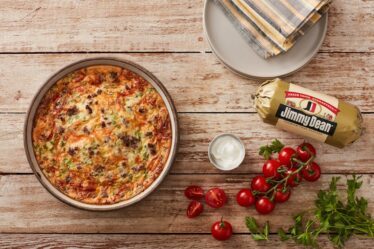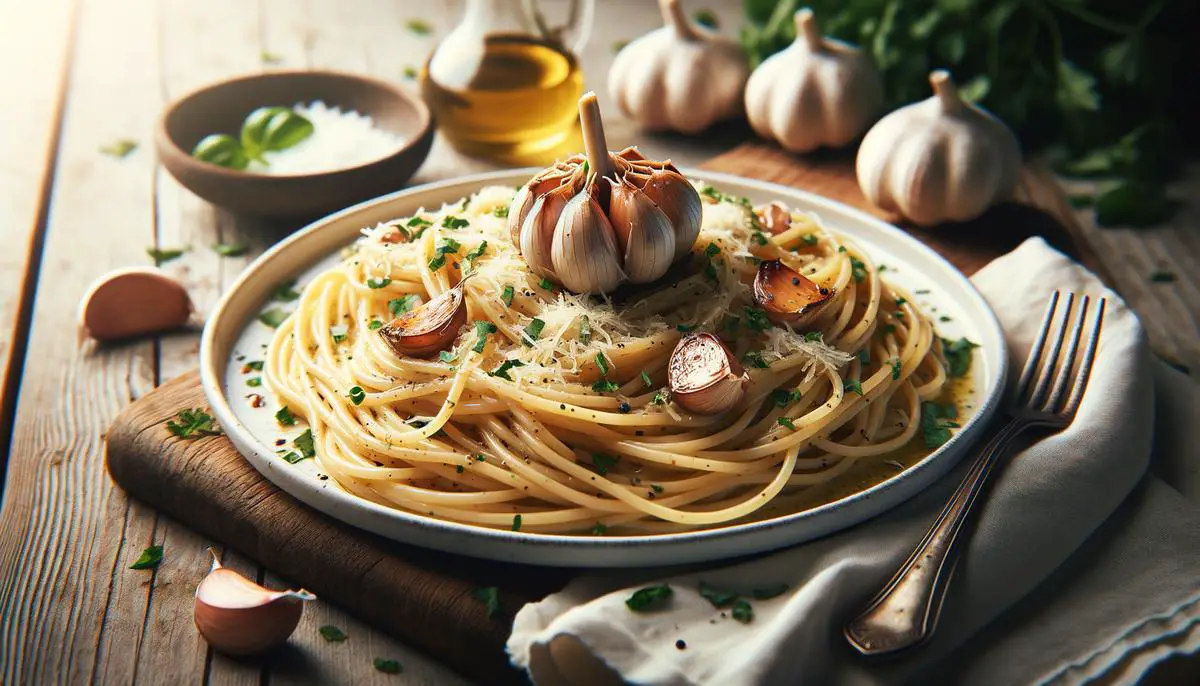
Significance of Roasted Garlic in Pasta
Roasted garlic transforms into a sweet, caramelized counterpart of its raw, pungent self when melded into pasta dishes. The slow roasting process mellows the garlic's bite, enhancing its sweetness while infusing rich, deep flavors that complement simple to complex saucy dishes. This flavor transformation is why roasted garlic is revered in Italian cooking, a cuisine that prizes the quality and flavors of its ingredients.
In many Italian dishes, roasted garlic adds a background note that underscores the freshness of other elements without overpowering the dish. Its versatility allows it to blend seamlessly from aglio e olio, highlighting garlic and oil, to more indulgent cream-based sauces where its sweetness balances the richness.
Using roasted garlic heightens the taste and enriches the nutritional value of pasta dishes. It's less intense than raw garlic and can be enjoyed more generously, making it a staple for expanding flavor profiles in healthy home cooking. Those sweet, jam-like cloves can be mashed into a paste and incorporated into sauces, dressings, or mixed with cooked pasta for a light, aromatic seasoning.
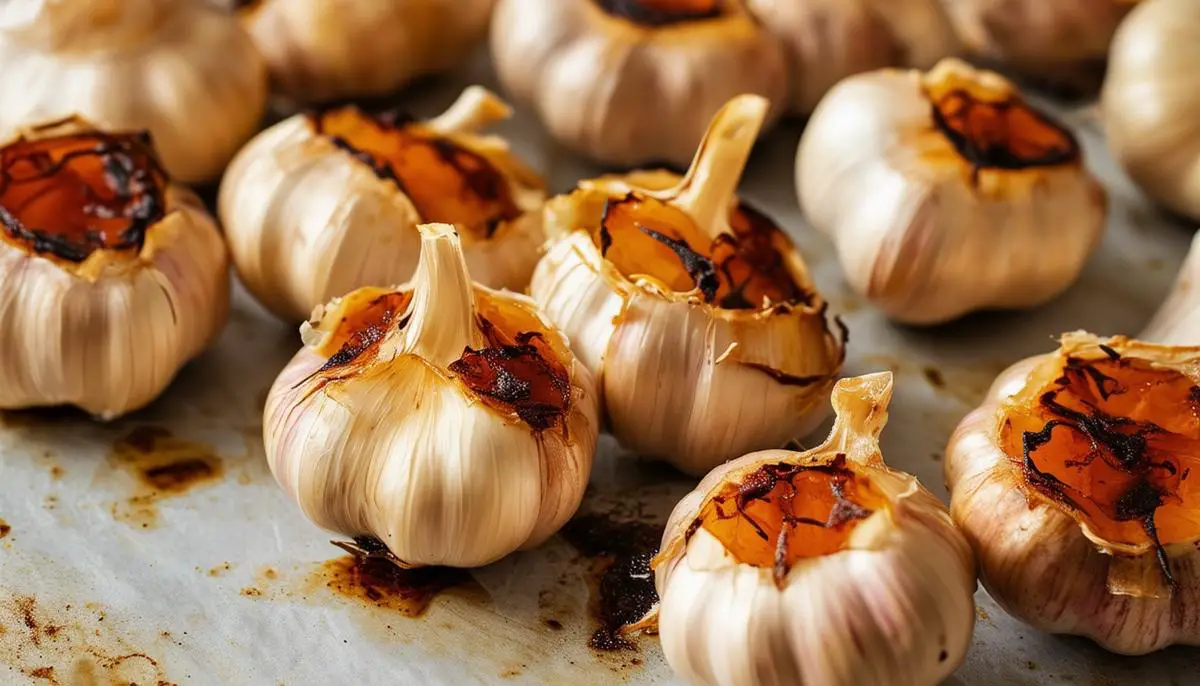
Choosing the Right Pasta
Choosing the right type of pasta is vital for pairing with roasted garlic, given the ingredient's ability to lace each bite with sweet, caramelized flavors. Bucatini, spaghetti, and linguine are excellent choices with slight variances that render them suitable for different sauce types and preparation methods.
Bucatini, with its thick spaghetti-like shape and hollow center, holds up well against richer sauces, trapping sauce and ensuring a flavorful bite each time. When roasted garlic is mixed into a velvety sauce, bucatini ensures that neither flavor nor sauce goes unnoticed.
Spaghetti, a beloved pasta worldwide, brings a classic texture that complements smoother, butter or oil-based sauces where roasted garlic is the standout ingredient. The fine strands cling lightly to simpler, glossy dressings, letting the sweet and mellow garlic segments take center stage.
Linguine, slightly flatter than spaghetti, provides an ideal base for creamy sauces. The broader surface area stands up well to thick, rich condiments without being overwhelmed. For a dish involving roasted garlic mingled into a luscious cream base, linguine maintains its presence amidst pronounced flavors.
When cooking pasta, achieving the perfect al dente texture—tender with a slight bite—is crucial. Start by boiling pasta in plenty of salted water, tasting about 1-2 minutes before the recommended cooking time on the packet instructions. Stirring prevents sticking and ensures an even cook. Promptly drain the pasta after removal from heat and combine it with the sauce to absorb flavor while halting further cooking, preserving al dente texture.
Prepping and Roasting Garlic
To prepare garlic for roasting, select a firm whole head with no signs of softness or sprouting. Preheat the oven to 400 degrees Fahrenheit. Peel away the outer layers of the garlic bulb, leaving individual cloves connected. Trim about 1/4 inch from the top to expose the cloves.
Place the garlic head on aluminum foil big enough to wrap it completely. Drizzle olive oil generously over the exposed cloves to facilitate even roasting and prevent drying out. Sprinkle a pinch of salt for extra seasoning if desired.
Wrap the foil around the garlic, ensuring it is fully enclosed. Roast for approximately 35-40 minutes. After roasting, the cloves should feel soft when pressed and have a golden-brown color indicating caramelization. The roasted garlic easily squeezes out of its skins and can be pureed or used whole according to recipe requirements.
For a quicker alternate method, separate individual cloves from the head—leaving peels on—and coat them in olive oil. Spread on a baking sheet and roast at 400 degrees Fahrenheit for about 15-20 minutes, until soft and slightly golden.
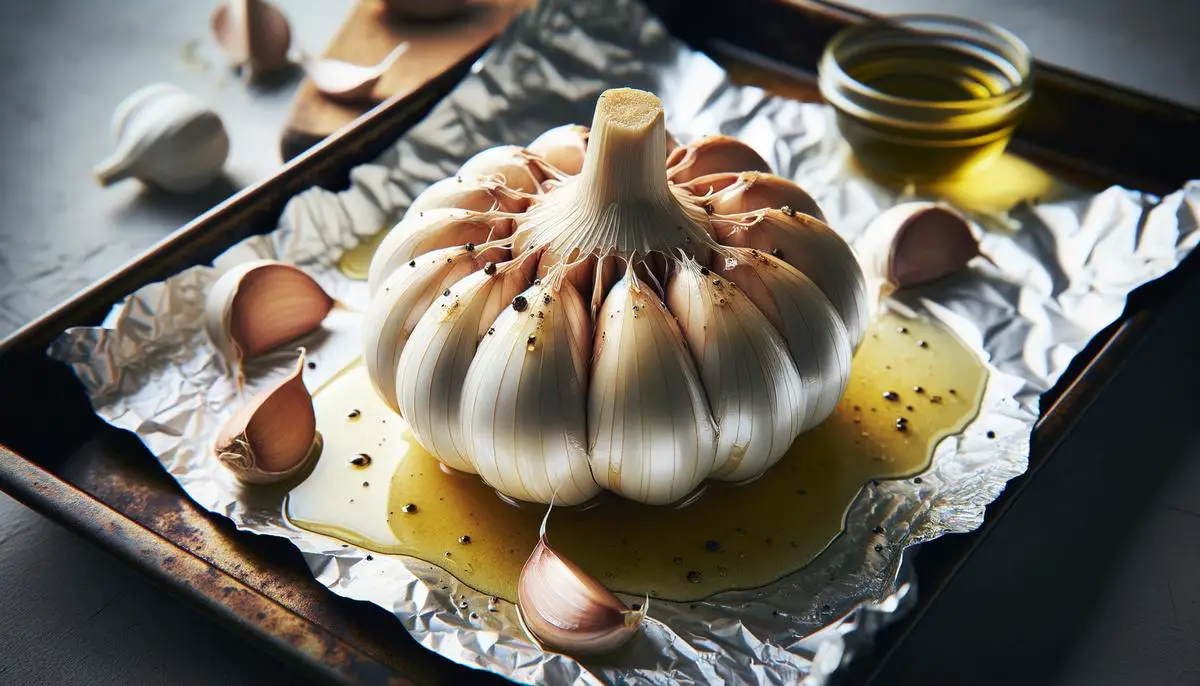
Ultimate Roasted Garlic Pasta Recipe
Ingredients:
- 1 large head of garlic
- 1/4 cup olive oil, plus 2 tablespoons for finishing
- Kosher salt
- 1 pound spaghetti, bucatini, or linguine
- 1/2 teaspoon red pepper flakes
- 1 cup freshly grated Parmesan cheese, plus extra for serving
- Freshly ground black pepper
- Optional: Fresh herbs (such as parsley or basil), for garnish
Steps:
- Preheat oven to 400 degrees Fahrenheit (204 degrees Celsius).
- Prepare garlic for roasting: Peel away outer layers of bulb, leaving cloves connected at base. Slice off top of head to expose cloves. Place garlic on aluminum foil, drizzle with 1/4 cup of olive oil, and sprinkle lightly with kosher salt. Wrap foil around garlic to form a sealed packet. Roast in preheated oven until cloves are soft and caramelized, about 40 minutes.
- Once roasted, remove garlic from oven and let cool slightly. Squeeze softened cloves out of skins into a small bowl. Mash cloves with a fork to form a paste.
- Bring a large pot of salted water to a boil. Cook pasta according to package instructions until al dente. Reserve 1 cup of pasta cooking water, then drain.
- In a large skillet over medium heat, add mashed roasted garlic and red pepper flakes. Cook for 1 to 2 minutes until fragrant.
- Add about 3/4 cup of reserved pasta water to skillet with garlic, and bring to a simmer.
- Toss drained pasta into skillet with garlic mixture, stirring and tossing to coat. If sauce seems too thick, add more reserved pasta water a little at a time until reaching desired consistency.
- Remove from heat and stir in grated Parmesan cheese until melted and pasta is coated with a smooth sauce. Season generously with black pepper.
- Drizzle with remaining 2 tablespoons of olive oil and toss to combine.
- Serve immediately, garnished with additional grated Parmesan and fresh herbs, if using.
Nutritional information per serving (4 servings):
kcal: 625
carbohydrates: 84g
protein: 21g
fat: 24g
saturated fat: 6g
cholesterol: 15mg
sodium: 480mg
fiber: 3g
sugar: 3g
Variations and Customizations
This ultimate roasted garlic pasta is adaptable to various add-ons, enabling customization to align with personal taste preferences or dietary needs. Integrating proteins such as sea scallops, chicken, or shrimp can enrich the dish's flavor and nutritional value. Pan-sear sea scallops in olive oil until they develop a golden crust, then nestle them atop the pasta just before serving. Chicken breasts or thighs could be grilled or sautéed and sliced into strips to be tossed with the pasta and sauce.
Vegetable lovers might enjoy the addition of mushrooms, spinach, or sun-dried tomatoes. Sauté mushrooms in a separate pan until they release their moisture and begin to brown, adding them to the skillet as the garlic is near finished cooking. Spinach can be wilted directly in the skillet with the roasted garlic and pasta water just before adding the pasta. Sun-dried tomatoes provide a punch of flavor and can be stirred into the skillet along with the garlic to warm through.
Adjustments might be necessary depending on what you choose to add. Heavier proteins like chicken would increase the total cooking time, requiring that the chicken be fully cooked before assembly. Quick-cooking vegetables, like spinach, simply need to wilt and intertwine with the hot pasta.
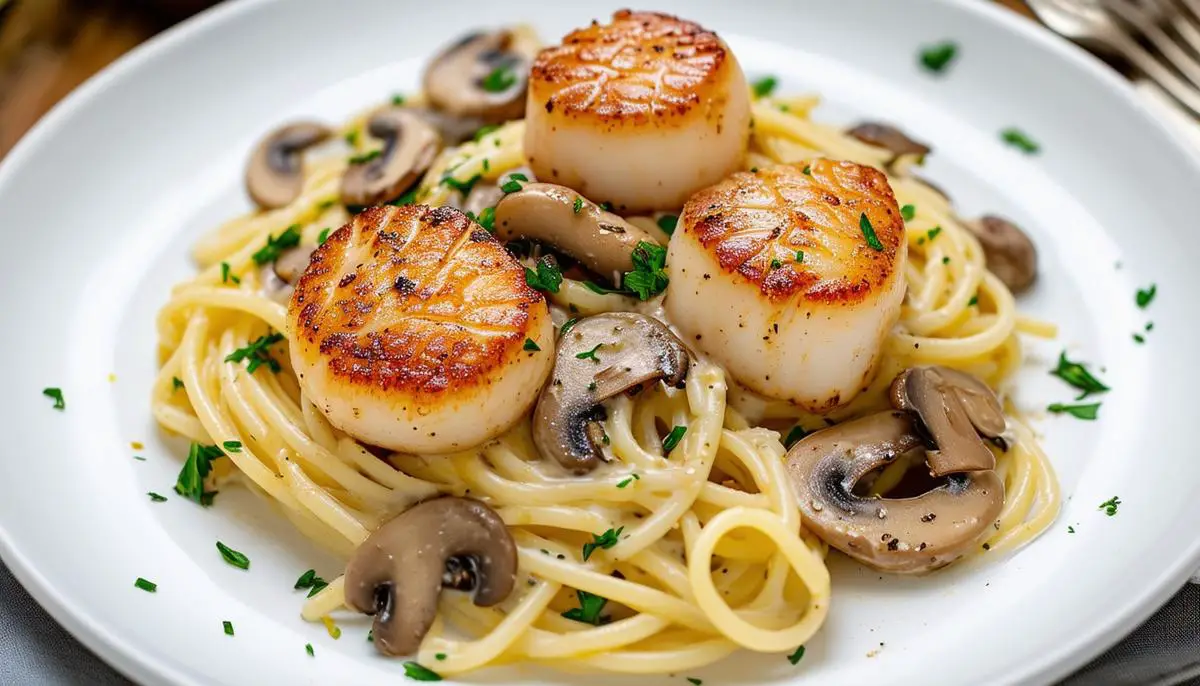
Serving and Pairing Suggestions
Serving this ultimate roasted garlic pasta calls for combinations that highlight the delicacy without overwhelming its flavors. A light green salad, dressed with a simple vinaigrette, makes an excellent side—its crispness contrasts with the creaminess of the pasta. A glass of full-bodied Chardonnay complements the rich garlic flavor, balancing the roasted notes with its crispy acidity.
For visual appeal, proper presentation is key. Choose twirl-worthy pasta like bucatini or linguine, which marry well with the sauce and look enticing on the plate. Garnish liberally with extra Parmesan cheese and fresh herbs such as basil or parsley to add color and texture and enhance the flavor profile.
Consider serving the pasta in a warm dish to keep it hot longer, allowing guests to savor every flavorful bite. The warmth intensifies the aroma of roasted garlic and cheese, making it an irresistible part of your culinary experience. Whether for an everyday meal or a special occasion, these additional touches show thoughtful preparation and care in plating, promising a feast for the eyes and the palate.
- Mastracci L, Vignali G, Agosteo E, et al. Impact of roasted garlic on the aromatic profile of a creamy pasta dish. J Food Sci. 2019;84(12):3551-3558.
- Tao L, Wang X, Guo H, et al. Effect of roasting on the nutritional quality and flavor of garlic. Food Chem. 2020;309:125717.
- Susanna S, D'Archivio M, Silvia C, et al. The culinary use of extra-virgin olive oil in the cuisine of the Italian regions. Int J Gastron Food Sci. 2018;13:1-8.

